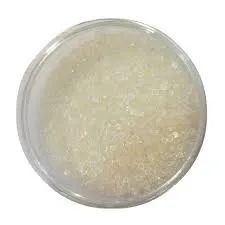Theobromine vs. Caffeine A Structural Comparison
Theobromine and caffeine are two closely related compounds that share a wealth of similarities in structure and source but differ significantly in their physiological effects and uses. Both belong to the class of compounds known as methylxanthines and are found in various plants, particularly in cacao and coffee. Their molecular structures play a crucial role in their functions in the human body, which can help us understand their differing impacts on health and behavior.
Chemical Structure
The chemical structure of theobromine (3,7-dimethylxanthine) and caffeine (1,3,7-trimethylxanthine) illustrates their close relationship. Both compounds are derivatives of xanthine, which is a purine base. The structural formulas showcase a fused bicyclic system composed of a pyrimidine ring and an imidazole ring.
In particular, the structural formula of theobromine features two methyl groups (–CH3) attached to the nitrogen atoms at positions 3 and 7 of the xanthine nucleus. Caffeine, on the other hand, has three methyl groups attached at positions 1, 3, and 7. This difference in the number of methyl groups is significant as it influences the solubility, metabolism, and effects of the two compounds.
Source and Availability
Theobromine has its primary source in cacao beans and is consumed mainly through chocolate products. Caffeine is widely recognized for its presence in coffee, tea, and several energy drinks. Both compounds can be found in varying quantities in other sources, but their two most famous vehicles, chocolate for theobromine and coffee for caffeine, dominate the market.
theobromine vs caffeine structure

Physiological Effects
Despite their structural similarities, theobromine and caffeine elicit distinct effects on the human body. Caffeine is primarily known for its stimulant properties – it can increase alertness and reduce feelings of fatigue. This is due in part to its ability to block adenosine receptors in the brain, leading to improved neuronal activity and the release of neurotransmitters such as dopamine and norepinephrine. As a result, caffeine consumption can enhance mood and cognitive performance.
Conversely, theobromine has a milder effect. It acts as a smoother stimulant and has a more prolonged action, which is sometimes appreciated for its calming effects. Theobromine tends to relax the muscles and dilate blood vessels, contributing to lower blood pressure. While both compounds have similar mechanisms—such as antagonizing adenosine receptors—they differ in how significantly they affect the central nervous system.
Metabolism and Half-life
Metabolically, both compounds are processed differently in the body. Caffeine has a half-life of about 3 to 7 hours, while the half-life of theobromine can be up to 7 to 12 hours, depending on various factors including individual metabolism and consumption levels. This extended half-life of theobromine means it usually remains active in the system longer than caffeine, contributing to its prolonged effects compared to the sharper spikes and drops associated with caffeine intake.
Conclusion
In summary, while theobromine and caffeine share a fundamental structural framework, their differences in molecular composition, sources, and physiological effects highlight the complexity of methylxanthines. These compounds offer intriguing insights into how slight variations in chemical structures can lead to vastly different experiences and health outcomes. Understanding these properties can influence dietary choices and health strategies, promoting a better understanding of how each compound affects our lives, caffeinated or chocolate-infused.

